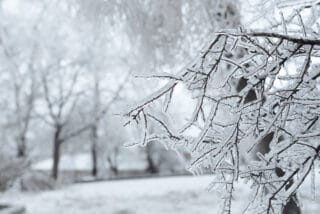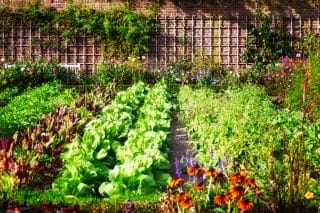Drought-Tolerant Plants: Beautify Your Landscape While Saving Water
Posted On
At Princeton Scapes, we believe a stunning landscape doesn’t have to come at the cost of excessive water use. In fact, with thoughtful design and smart plant choices, your outdoor spaces can be both beautiful and water-efficient. As concerns about water conservation grow—and as summers become hotter and drier—more property owners are turning to drought-tolerant plant ideas to create landscapes that thrive under pressure.
Whether you’re managing a private estate, leading an HOA, or overseeing a commercial property, selecting eco-friendly landscape plant choices isn’t just a smart environmental move—it’s a way to enhance the resilience, sustainability, and long-term value of your property.

Why Drought-Tolerant Plants Matter
Water is a precious resource, and landscapes that rely heavily on irrigation can be both costly and unsustainable. With water-saving plants for landscaping, you can reduce your dependence on irrigation systems, cut back on maintenance costs, and support local ecosystems—all while enjoying a rich, colorful, and dynamic landscape design.
Drought-tolerant plants are specially adapted to thrive in dry conditions. They require less watering, are often more pest-resistant, and tend to be hardier in the face of temperature extremes. That makes them an ideal fit for both practical and aesthetic landscaping goals.
What Is Xeriscaping?
A term that’s gaining popularity, xeriscaping refers to a landscaping approach that minimizes water use by using drought-resistant plants, improving soil health, and optimizing irrigation practices. But xeriscaping isn’t just gravel and succulents—when done right, it’s vibrant, layered, and full of visual interest.
At Princeton Scapes, we apply xeriscaping tips for home gardens and larger properties alike to reduce water waste without sacrificing design. Our expert teams blend horticultural science with artistic composition to ensure every xeriscaped area complements the surrounding architecture and land features.
Drought-Tolerant Plant Ideas for Northeast Landscapes
While some think drought-tolerant plants are only suited for arid regions, there are plenty of hardy, low-water options that thrive in the Northeast. Here are some of our favorite choices that blend beauty with resilience:
1. Sedum (Stonecrop)
A staple of any drought-tolerant garden, sedum offers low, spreading groundcover with succulent leaves and bright blooms. It’s perfect for borders, rock gardens, or mixed beds.
2. Echinacea (Coneflower)
These native perennials are beloved for their large, daisy-like flowers and ability to attract pollinators. Once established, echinacea tolerates heat and dry conditions with ease.
3. Russian Sage (Perovskia atriplicifolia)
With silvery foliage and spikes of lavender-blue flowers, Russian sage adds a soft, airy texture to any garden. It thrives in full sun and dry soil.
4. Yarrow (Achillea millefolium)
Yarrow is a rugged, clump-forming perennial with flat-topped flowers in white, yellow, or pink. It’s ideal for mass plantings or naturalized meadows.
5. Lavender (Lavandula)
Fragrant, compact, and resilient, lavender is not only drought-tolerant but also deer-resistant. It performs well in poor soils and sunny spots.
6. Black-Eyed Susan (Rudbeckia)
A classic wildflower, this cheerful yellow bloomer is heat-tolerant and low-maintenance—perfect for adding warmth and charm to larger beds.
7. Blue Fescue (Festuca glauca)
This ornamental grass offers cool-toned color and fine texture. It requires minimal water once established and is excellent in modern or low-profile designs.
These selections, when combined thoughtfully, can reduce water use while still delivering seasonal color, pollinator appeal, and visual texture.
Xeriscaping Tips for Home Gardens and Larger Properties
Creating a successful drought-tolerant landscape involves more than just plant selection. Here are some of the strategies we implement at Princeton Scapes:
1. Group Plants by Water Needs
By organizing plants with similar watering requirements into “hydrozones,” we reduce overwatering and ensure every plant receives appropriate care.
2. Improve Soil Structure
Adding organic matter like compost enhances the soil’s water retention capacity, reducing the need for frequent irrigation.
3. Mulch Generously
Mulch insulates the soil, retains moisture, and reduces weed competition. We recommend applying 2–3 inches of mulch around plants—keeping it away from trunks or stems.
4. Limit Turf Areas
Traditional lawn grass is one of the thirstiest landscape elements. We help clients reduce turf areas by introducing ornamental beds, groundcovers, or permeable hardscapes.
5. Use Efficient Irrigation Systems
Drip irrigation and soaker hoses deliver water directly to the root zone, minimizing evaporation and runoff. Smart controllers optimize water use based on weather conditions.
These practices allow us to deliver drought-tolerant landscapes that are not only functional but also deeply beautiful and sustainable.
Benefits Beyond Water Savings
While water conservation is the primary goal, using drought-tolerant plants and xeriscaping techniques also delivers additional benefits:
- Lower Maintenance: These plants require less mowing, trimming, and fertilizing.
- Biodiversity Support: Many drought-tolerant plants attract pollinators like bees and butterflies.
- Improved Soil Health: With less disturbance and fewer chemicals, your landscape becomes healthier and more self-sustaining.
- Increased Property Value: A well-designed, eco-friendly landscape makes a strong visual impression and signals long-term care and quality.
At Princeton Scapes, we design with both performance and beauty in mind—ensuring that every plant, pathway, and detail contributes to your overall landscape vision.
Princeton Scapes: Your Partner in Sustainable Landscape Design
As part of our full-service offerings, Princeton Scapes provides landscape design, installation, and maintenance services with an emphasis on sustainability and long-term success. We collaborate closely with property managers, estate owners, and HOA boards to identify and implement solutions that balance aesthetics, function, and resource efficiency.
Whether you’re interested in introducing water-saving plants for landscaping, implementing a complete xeriscape design, or simply refreshing your planting beds with low-maintenance options, we bring horticultural expertise, thoughtful planning, and impeccable execution to every project.
Ready to enhance your landscape with beautiful, drought-tolerant choices? Let’s create a sustainable solution that elevates your outdoor space while reducing water use.
Contact Princeton Scapes today to schedule a consultation and discover how we can help you beautify your property—while conserving one of nature’s most vital resources.




